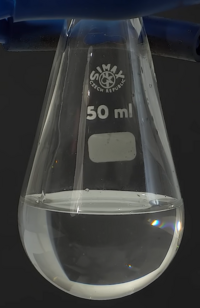
Photo from wikipedia
Abstract A simple and rapid microwave-assisted extraction (MAE) method for the quantitative determination of various elements by inductively coupled plasma optical emission spectrometry (ICP-OES) has been developed. A single-step MAE… Click to show full abstract
Abstract A simple and rapid microwave-assisted extraction (MAE) method for the quantitative determination of various elements by inductively coupled plasma optical emission spectrometry (ICP-OES) has been developed. A single-step MAE procedure employing very dilute solutions of a mixture of HClO4 and H2O2 was utilized for the extraction of Zn, P, Cd, Pb, Fe, Mn, Mg, Cu, Ca, Al, Na and K from wide range of food materials (wheat flour, brown bread, total diet and skimmed milk powder). Critical parameters affecting MAE process such as extractant concentration (HClO4 and H2O2), extraction time and temperature were optimized to get quantitative recovery of elements. The methodology was optimized by using two representative food based reference materials; wheat flour NIST-1567a and non-fat milk powder NIST-1549. The solid residues remained after MAE extraction was filtered and the supernatant was diluted 3–10 times with high purity water before analysis by ICP-OES. These studies indicate that the method is a rapid (within 15 min) and quantitative recoveries (>95%) for all the selected elements, were obtained using a 2% (v/v) HClO4 and 4% (v/v) H2O2 mixture as extractant. The optimum microwave extraction parameters obtained were: temperature - 140 °C, pressure - 6 bar and time - 10 min. The accuracy of the proposed MAE method was further evaluated analyzing two more certified reference materials, brown bread BCR-191 and total diet NIST-1548. It was possible to perform the extraction of up to 0.5 g of food materials using an optimized extractant mixture of 2% (v/v) HClO4 and 4% (v/v) H2O2 with resultant carbon content lower than 3470 mg L−1. The results showed no significant statistical difference (Student's t-test, 95% confidence level) between found values and certified values. The recoveries ranging from 97 to 104% were obtained with RSD values
Journal Title: Microchemical Journal
Year Published: 2019
Link to full text (if available)
Share on Social Media: Sign Up to like & get
recommendations!